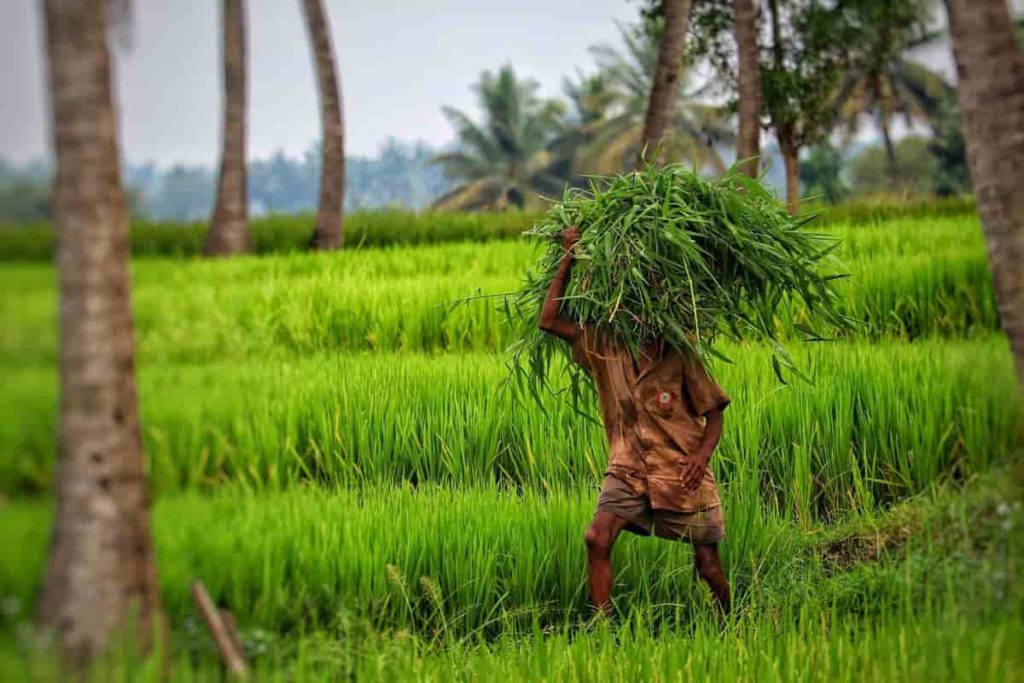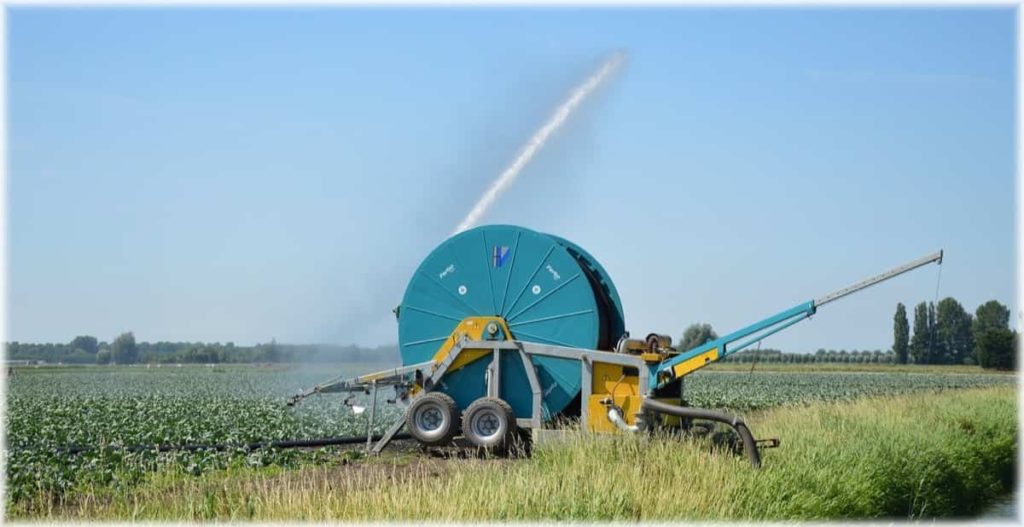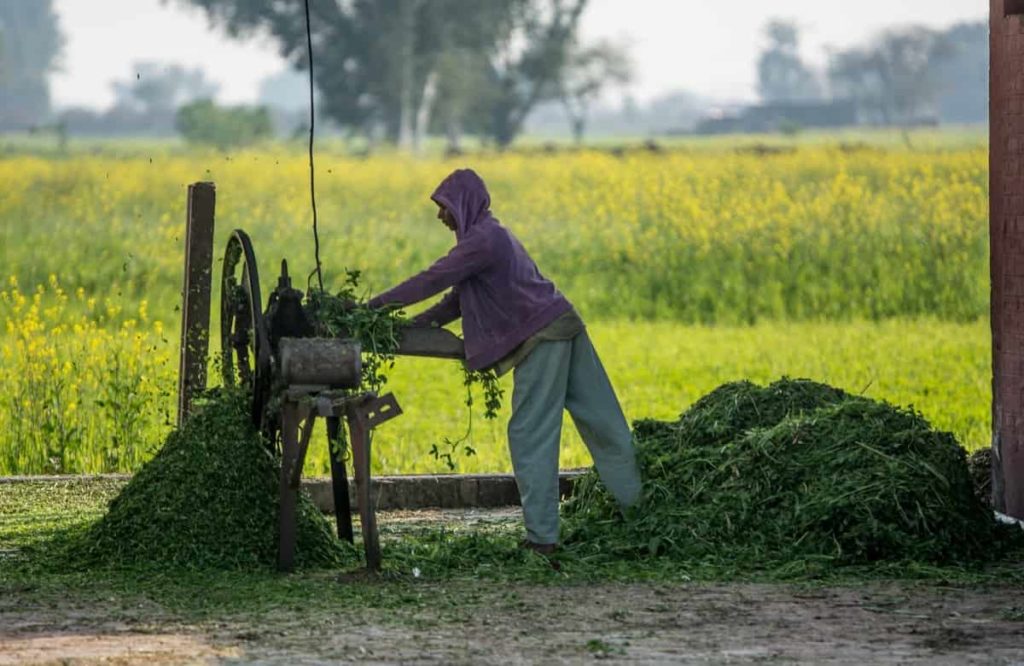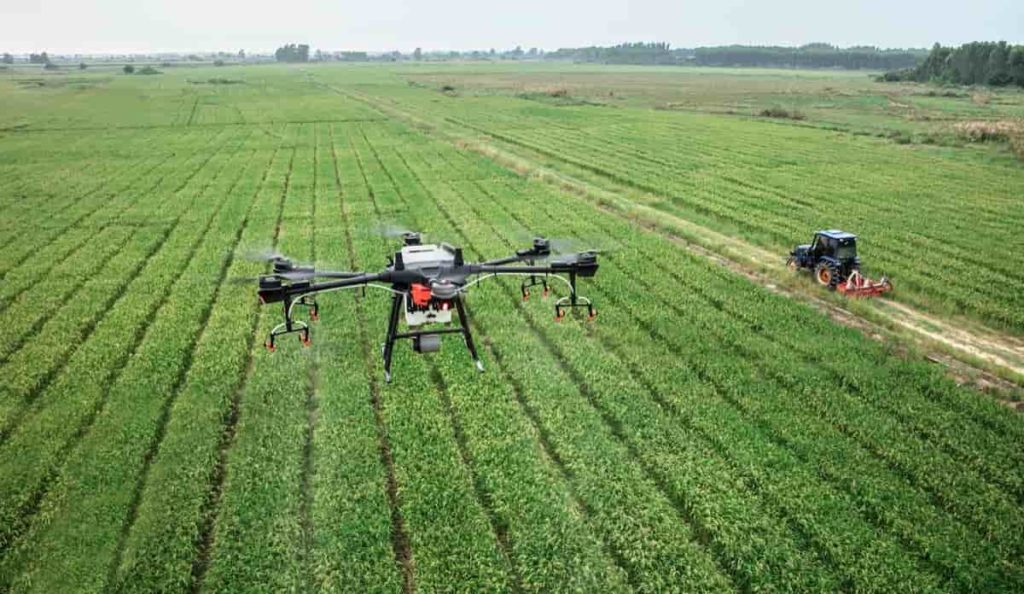Introduction to the future of agriculture in India: India is an agricultural country and two-thirds of its population is dependent on the agriculture sector. Youth is the backbone of the country; they can understand innovations and new ways of farming. India is developing rapidly and so is the use of technology in the growing sectors of the country. A large portion of the population still depends on and relies on agriculture as their main source of income. The involvement of youth can increase the use of social media in agriculture as the younger generation can easily use social media properly. Our old farmers do not want social media to increase in agriculture.
That this is time-consuming and there are some risks involved in using it. So first we need to train them. On the other hand, lack of education is also a big problem. Due to this problem, the majority of farmers were not interested in using social media in agriculture. Another reason behind this is that they do not know how to use social media properly. Most farmers use the traditional methods of farming due to a lack of awareness about the new practices and also, the thought that the traditional method is easy to use than modern.

Agriculture is the livelihood of the majority of the population in India and can never be underestimated. Although its share of gross domestic product (GDP) has fallen to less than 20% and participation of other sectors has increased rapidly, agricultural production has increased. Rising population, rising average income, and the effects of globalization in India will increase the demand for quantity, quality, and nutritious food and variety of food. Therefore, the pressure to reduce the available arable land to produce more quantity, variety, and quality of food will continue to increase.
India is endowed with a large arable land with 15 agro-climatic zones as stated by ICAR, which is capable of growing almost all types of climatic conditions, soil types, and varieties of crops. India is getting better agricultural implements and new mechanized agricultural implements. We can assess the importance of farming techniques that can increase crop yields and maintain soil fertility while saving time and using it in other fields. Similarly, we must not forget that along with the revolution in farming equipment in India, it is also important to take care of the fields and crops.
Small changes that do not need any technical knowledge and farmers should be educated. For example,
- Farmers use tractors instead of relying on animals.
- Use seed drills to increase agricultural efficiency.
- Pressure spray should be used throughout the farm to protect crops from infection.
- Spraying should be used to irrigate plants evenly for healthy and sustainable growth.
- This simple implementation of existing machinery and improved agricultural equipment can help farmers in crop production, as well as better health as the burden of heavy supply, is reduced.
- But now more and more innovations have taken place in the agricultural sector and these new technologies need to be developed for the agricultural process. The next big step needs to be taken to move towards productive farming.
Guide on future of agriculture in India, new technologies needed, digital agriculture application, implementation, major constraints

Why the need to adopt agriculture in the future?
Farmers need to be adapted so that they can continue to produce crops and raise livestock in a changing environment. They may need to change what crops they grow, the timing of important farming activities, how they manage their water use, and what shelter or shade they provide for animals.
New technologies needed for the future of agriculture in India
Farmers need to understand the need for new technology. New techniques can help farmers save time that can be used effectively in other activities and professions. The limited use of mechanized farming techniques has hindered the development of a more organized and productive agricultural sector. India is familiar with technology but farmers are unable to adapt due to the cost of new agricultural machines and knowledge. The government will have to take advantage of financial stability and introduce schemes like rental machines or Rashtriya Krishi Vikas Yojana to put new technologies into practice.
In case if you miss this: Organic Farming in Meghalaya, How to Start
Enhanced hybridization
Short-term hybrids produce more in less time and thus use less water. Hybrid seeds with intrinsic properties can provide additional resistance to diseases. It saves two to three sprays, reduces chemical use on plants, and reduces the level of chemical residues in soil and water.
Drip irrigation
70% of all water use is on agriculture. The agriculture industry needs to focus on improving water quality and addressing water scarcity. This method uses sensors and technology to accurately target water and crop protection targets based on specific geographical needs, pressure from pests and diseases, as well as the needs of the plant life cycle. This water-conscious solution also translates into farmers’ economic savings.
Precision farming
Many things can happen during the growing season. Accurate farming technologies can help eliminate uncertainty or at least reduce further risks. Accurate farming involves collecting data through integrated hardware such as tractors equipped with GPS or sensors. Using the technology, the collected information can be analyzed so that the relevant agricultural analysis can be collected. Farmers can then make specific decisions for the field zone in their day-to-day operations. In a country like India with 11 agro-climatic zones and different farming methods, it can help farmers to increase crop yields.
Drones in agriculture
Imagine a drone that can maneuver crop areas as well as process responses. For example: Identify where grasses are, what type they are, identify pests and diseases, and localize the use of agrochemicals. Around the world, drones are completely changing the whole process of cultivation and harvesting. Industry estimates suggest that the use of drones could increase crop yields by 15 to 20 percent.
Continuous digitization
People are excited about driverless cars, but this technology will be adopted even faster in agriculture. And the integration of artificial intelligence, satellite imagery, and sophisticated predictive software will help farmers make important decisions in real-time, saving time, money, and possibly crop from the devastating effects of pests or extreme weather.
Automation in agriculture
It is argued that the future of agriculture lies in automation. Modern farming tools and agricultural automation can help smooth the crop production cycle and make it more efficient. Some of how automation is currently used in farming include:
In case if you miss this: Digital Innovation In Agriculture And Farming

Self-driven tractors
Self-driven tractors are the next self-propelled tractor or driverless tractors. Combined with GPS technology, there has been rapid growth in agriculture and farming as a whole. Farmers can now program their tractors and focus on operational activities.
Aerial farm management
It has also added value in a very short time. Drones and unmanned aerial vehicles (UAVs) are being used extensively with the abundance of options available to farmers. Drones can be used to take pictures with cameras and to help farmers examine their crops and identify crop infections. This invention can also be used for herbicides or pesticide sprays. In India, for example, the Kisan Raja Nizam was invented in 2011 and since then more than 34,000 farmers in the Indian state of Telangana have been helped to monitor their pumps.
Organic farming
To sustain growing demand and supply, agriculture must have sustainable intensity and diversity, giving priority to organic farming. Soil degradation and environmental hazards can be reduced by practicing organic farming. High consumption of high-value food and cash crops, organized food retailing, demand for bioenergy will create a favorable business environment by activating policies for high-value agriculture. Farmers can find out the chemical composition of the soil through lab testing so that they can grow what they need to grow to be fertile and maximize profits.
Digital agriculture application in future of agriculture in India
The application of digital agriculture includes technical interventions based on remote sensing, soil sensors, unmanned aerial surveys, and market insights, to enable farmers to integrate crop and soil health conditions at different stages of production allows imagining and testing. They can serve as a starting point for identifying potential challenges and empowering them to deal with them promptly.
Artificial Intelligence / Machine Learning (AI / ML) algorithms to improve crop yields, control pests, assist in soil testing, provide viable data to farmers and help reduce their workload can create actionable insights in time. Blockchain technology provides accurate data related to the manipulation of farms, inventories, instant and secure transactions, and food tracking.
That way, farmers don’t have to rely on paperwork or files to record and store important data. Some technologies used in future agriculture are robots, temperature and humidity sensors, aerial imagery, and GPS technology. This will allow modern equipment and accurate farming and robotic systems to make farms more profitable, efficient, safe, and environmentally friendly.
Governments can play the main role in solving the food scarcity issue. They need to play a wider and more significant role than their traditional regulatory and facilitation work. By challenging the traditional heritage model and advancing such programs, governments;
- Firstly, ensure food security and reduce dependence on imports.
- Become a net exporter of not only products but also new solutions.
- Increase productivity and support transition to innovation and knowledge-based economy.
Implementation of digital agriculture in India
An important factor behind the gradual adoption of digital farming in India is the importance of isolated smallholder farms in the country, which complicates data collection. In addition, limited access to machinery and recurring natural disasters, such as droughts, floods, and excessive monsoon rains, have negatively affected the deployment of digital solutions in the sector. Thus, implementing digital agriculture on a typical Indian small farm will require a custom approach, which can be expanded later and made available to many Indian farms. The following steps can be taken to make digital agriculture successful in India;
Low-cost technology
This low income explains the precarious financial situation in which an ordinary farmer works in India. Thus, the technology will help reduce the cost.
Portable hardware
As ordinary Indian farms are small, there is a good chance of plug-and-play hardware in the Indian market. Also, leasing of agricultural land under various farming arrangements is widely practiced, so a farmer cultivating on a specific plot of land may move to another farm plot in the next season. In such cases, investing in portable equipment is best for farmers.
In case if you miss this: How To Buy Agricultural Land In Rajasthan

Rental and sharing platforms for agricultural equipment and machinery – Due to both limited financial resources and small farm plots, there is an opportunity for digital platforms that offer equipment rental and sharing services instead of outright purchases.
Academic support
Local agricultural organizations and educational institutions regularly interact with farmers through various programs and government initiatives organized locally. The training facilities provided by various educational institutions and agricultural organizations will improve the digital adoption of farmers.
Benefits of digital agriculture
Implementing these technological solutions enables reliable management and monitoring of farms. Because farmers get a complete digital analysis of farms in real-time, they can act accordingly and do not need to use excessive pesticides, fertilizers and reduce overall water consumption. Other benefits include:
- Increases agricultural production and reduces production costs.
- Prevents soil degradation.
- Reduces chemical use in crop production.
- Promotes efficient and effective use of water resources.
- Raises the socio-economic status of farmers.
- Reduces environmental and environmental impact.
- Increases worker safety.
Emerging trends in the future of agriculture
Agricultural exports
India is the largest exporter of agricultural products. Therefore, it is one of the major emerging trends in agricultural marketing under liberalization. Due to deregulation, the volume of agricultural exports under the WTO principle is increasing and it has the potential to grow shortly. India is in a favorable position in terms of agricultural exports as the agricultural sector is subject to low import materials, low labor costs, good weather conditions, and low unit cost of input. Agricultural exports play a vital role in the development of the agricultural sector. Also, it is increasing the number of employment opportunities and diversifying agricultural activities.
Agricultural diversification
Agriculture not only meets the demand for food commodities but also meets other development needs. In recent years, the farming industry has been diversified to produce commercial and horticultural crops such as Fruits, Vegetables, Spices, Cashews, Areca Nut, Coconut, and Flour Products such as Flowers, Orchids, Dairy, Animal Husbandry, and products. Liberalization of the economy has created ample scope for growth of the agricultural sector in terms of growth in both production and trade.
Developing new biological techniques in agriculture
During the Green Revolution, the large-scale use of chemical fertilizers and pesticides was encouraged to meet the growing demand for food to feed a growing population. Increasing population, the ever-increasing demand for food, and unlimited exploitation of natural resources pose serious threats to the environment and agriculture.
To avoid further damage to the environment and the agricultural sector, more emphasis is being placed on the use of biotechnology for agricultural purposes, and on developing new organic technologies. These are recent trends in agriculture that increase agricultural productivity and improve the condition of the sector. Also, these trends help to improve the conditions of farmers as well as employment. In addition, they make the future of agriculture in India brighter and more successful.
Future of agriculture with Unmanned Aerial Vehicles (UAV) and Artificial Intelligence (AI)
With the recent advances in technology, we have seen many agro-tech startups, AI comes as a great honor for the agricultural sector which relies heavily on weather conditions that are often unpredictable.
Unmanned aerial vehicles (UAV)
A small airplane called an unmanned aerial vehicle (UAV) uses important data such as multispectral imaging, visual and thermal imaging, humidity, weather at resolutions up to 1 cm/pixel. Can be used to monitor and observe the situation and air pressure. This data can help the farmer to make informed decisions.
In case if you miss this: Organic Farming In Assam, How To Start

Crop and soil monitoring
Crop and soil health can be monitored by sensors.
Predictive agricultural analytics
Farming methods due to lack of access to the scientific understanding of crop life cycle, pests, quality metrics, and the latest micro-fertilizers.
Agricultural product grading
Crop diseases or pest infestations in crops can be accessed through a picture on the farmer’s phone and product quality can be determined in real-time without any manual intervention.
These innovative techniques are the future of Indian agriculture. They get complete information about commodities (growing information, pre-and post-harvest, transportation, and warehousing, etc.) and actively advise farmers on sowing, pest control, and harvesting, etc.
Major constraints in Indian agriculture
- Farming for subsistence is a question mark on the scale of the economy, with mostly smallholdings.
- The main role of unorganized creditors affects farmers’ decisions in purchasing inputs and selling produce.
- Lack of primary level processing at farmer level and less value addition compared to developed countries.
- Poor infrastructure relies heavily on favorable weather conditions, marketing, and the supply chain for high-value crops.
The future of agriculture is a crucial question for planners and all other stakeholders. The government and other organizations are working to address key agricultural challenges in India, including smallholdings of farmers, primary and secondary processing, supply chain, infrastructure to support efficient use of resources and marketing, and reduction of market intermediaries. There is a need to work on cost-effective technology with environmental protection and protection of our natural resources. Reforms towards privatization, liberalization, and globalization have rapidly affected the input market at a faster pace.
At the same time to revive the cooperative movement in India to solve the problems of the information technology revolution, new technologies in agriculture, especially private investment in research and development, smallholdings and small production, etc. Many startups in agriculture through highly educated youth show that they are capable of realizing the high potential of investing and making efforts in this field. The overall impact of technology will change the face of agriculture in the next decade. All the constraints in agriculture complicate productivity and return, but there is still a lot of unused potential in India’s agricultural sector.
In case if you miss this: Balcony Gardening in India, How to Start, Ideas
Beneficial weather and soil conditions, high demand for food, unused opportunities, various financial incentives provided by the government for input, productive infrastructure, availability of cheap credit facilities, and promotion of marketing and exports. So many people, big companies, startups, and businesses are attracted. To invest heavily in innovations, inventions, research and development, and other aspects of the business. Efforts are being made to turn all the challenges of agriculture into opportunities and this is the future of agriculture.
Sustaining the environment and future agricultural production
In some parts of India, excessive pumping of water for agricultural use is causing groundwater levels to fall. In contrast, reservoirs are causing salinity buildup in the soil of some irrigated areas. On the other hand, in rain-fed areas, where the majority of the rural population lives, agricultural practices need to be adopted to reduce soil erosion and increase rainfall absorption. Excessive exploitation and degradation of forest land require mitigation measures. There are proven solutions to almost all of these problems.
The problem, however, is how to extend such measures to cover large areas of the country. Climate change must also be considered. More severe events – droughts, floods, erratic rains – are expected and will have the greatest impact in rain-fed areas. The watershed program, linked to agricultural research and extension initiatives, may be the most appropriate agricultural program to promote new varieties of crops and improved farming methods. But other issues, such as employment programs and off-farm employment growth, can also be key.
Key trends in the future of agriculture in India
1. Changing demand due to income growth, globalization, and health awareness is further affecting future production. Demand for fruits and vegetables, dairy products, fish, and meat is going to increase in future agriculture.
2. Research, improvement in technology, safe cultivation of high-value vegetables and other vegetables will be more. There will be high demand for processed and affordable quality products.
3. More between private companies that provide innovative products, improved seeds, fertilizers, plant protection chemicals, custom farm machinery, and fodder for animals at cost-effective ways at more lucrative prices to farmers. The use of biotechnology and breeding will be important in developing environmentally friendly and disease resistant, climate-resistant, more nutritious, and delicious crop varieties.
4. Some technologies will be widely and widely used in the future and some will become commonplace in a short time while some will take time to mature. To develop similar products in other ways so that resources can be used more efficiently and use new resources such as hydroponics, production plastics, and bioplastics. There will be long-term efforts to find new areas for production.
5. With the decisions based on soil testing, the focus will be on precision farming, automation using artificial intelligence for proper application in agriculture. Sensors and drones will be used for accuracy, quality, cost-effectiveness for the environment. Small and medium farmers will also use these technologies with the help of private players, government, or farmer producer organizations (FPOs). The use of GPS technology, drones, robots, etc., can make the lives of farmers easier and more exciting through smartphones, etc. These modern tools will make agriculture more profitable, convenient, and environmentally friendly.
6. Use nanotechnology to enhance food quality and safety, effective use of input will be short. The use of nanomaterials in agriculture will reduce waste, reduce nutrient losses in fertilization, and increase productivity through pest and nutrient management. IFFCO has already successfully tested nano-fertilizers.
7. India has significantly improved its digital connectivity and market access has become much easier. Farmers will be smarter with mobile phones in their hands and will be able to be more informed and connected with different stakeholders. The government will make extensive use of digital technology for government schemes, using digital technology to create awareness among farmers, exchange information, and transfer money directly.
In case if you miss this: How To Start Onion Farming, Questions, Answers

8. More work will be done by the government, village communities, agricultural startups, and private players to save the rapidly depleting water resources. The use of digital technology could revolutionize this. Satellites, IoTs, drones will be used to better collect data on soil health, crop area, and yield, which will reduce the cost of insurers with better estimates and make the system more accurate and efficient.
9. There will be more specialized marketers in operations, area, and crop-specific small equipment’s which will make the work easier and more efficient even in small farms. There will be less food waste and better use of waste materials in agriculture. The number of warehouses in the private sector will increase and the links between public and private warehouses will increase. This will help balance supply with demand and stabilize the prices of agricultural produce in the market.
Farmer-centric policies and schemes for the future of agriculture
The government should create a conducive economic environment for capital formation and increase farmers’ investment by removal of distortions. Improving trade conditions with the manufacturing sector and reforming the external and domestic market, supporting rationalization of domestic tax structure, easy access to credit, insurance against crop failures and other inputs, and agribusiness industries.
Infrastructure facilities for the development and growth of the effective delivery system and free movement of agricultural produce. And finally, our rich traditional knowledge and advanced technology will make agriculture highly productive, improve the overall socio-economic condition of farmers and attract young people to farming. In this way, India will be able to reduce agricultural imports and increase agricultural exports in the future. Therefore, with a determined vision for better policy and better infrastructure for Indian agriculture in the years to come, cascading benefits, environment and ecosystem protection can be achieved without compromise.
Prampragat Krishi Vikas Yojana (PKVY) – The purpose of this scheme is to encourage farmer groups to engage in organic farming. India is currently one of the leading 172 countries in the world engaged in organic farming. The country currently has more than 650,000 organic producers, 699 processors, 669 exporters, and 7,20,000 hectares of land.
However, with only 0.4% of the total agricultural land available for organic farming, it is clear that the industry still has a long way to go in terms of development. Farmers still have the option of chemical-free farming using metabolite-based bio-Agri inputs, which is the best alternative to chemical-based inputs and helps in residue-free farming.
The future will be technology-driven and research-driven. This will open up more avenues for development, investment, and ultimately for the development of the sector and the nation as a whole.
- Economical Aquaculture: A Guide to Low-Budget Fish Farming
- 15 Common Planting Errors That Can Doom Your Fruit Trees
- How to Make Houseplants Bushy: Effective Tips and Ideas
- Innovative Strategies for Boosting Coconut Pollination and Yield
- Pollination Strategies for Maximum Pumpkin Yield
- The Complete Guide to Chicken Fattening: Strategies for Maximum Growth
- Natural Solutions for Tulip Problems: 100% Effective Remedies for Leaf and Bulb-Related Issues
- Revolutionizing Citrus Preservation: Towards a Healthier, Greener Future
- Natural Solutions for Peony Leaf and Flower Problems: 100% Effective Remedies
- Maximizing Profits with Avocado Contract Farming in India: A Comprehensive Guide
- Natural Solutions for Hydrangea Problems: 100% Effective Remedies for Leaf and Flowers
- The Ultimate Guide to Choosing the Perfect Foliage Friend: Bringing Life Indoors
- From Sunlight to Sustainability: 15 Ways to Use Solar Technology in Agriculture
- The Ultimate Guide to Dong Tao Chicken: Exploring from History to Raising
- The Eco-Friendly Makeover: How to Convert Your Unused Swimming Pool into a Fish Pond
- Mastering the Art of Delaware Chicken Farming: Essentials for Healthy Backyard Flocks
- 20 Best Homemade Fertilizers for Money Plant: DIY Recipes and Application Methods
- How to Craft a Comprehensive Free-Range Chicken Farming Business Plan
- Brighten Your Flock: Raising Easter Egger Chickens for Beauty and Bounty
- How to Optimize Your Poultry Egg Farm Business Plan with These Strategies
- Subsidy for Spirulina Cultivation: How Indian Government Schemes Encouraging Spirulina Farmers
- Ultimate Guide to Raising Dominique Chickens: Breeding, Feeding, Egg-Production, and Care
- Mastering the Art of Raising Jersey Giant Chickens: Care, Feeding, and More
- Ultimate Guide to Raising Legbar Chickens: Breeding, Farming Practices, Diet, Egg-Production
- How to Raise Welsummer Chickens: A Comprehensive Guide for Beginners
- How to Protect Indoor Plants in Winter: A Comprehensive Guide
- Ultimate Guide to Grow Bag Gardening: Tips, Tricks, and Planting Ideas for Urban Gardeners
- Guide to Lotus Cultivation: How to Propagate, Plant, Grow, Care, Cost, and Profit
- Agriculture Drone Subsidy Scheme: Government Kisan Subsidy, License, and How to Apply Online
- Ultimate Guide to Raising Araucana Chickens: Breed Profile, Farming Economics, Diet, and Care
- Bringing Hydroponics to Classroom: Importance, Benefits of Learning for School Students
- Ultimate Guide to Raising Polish Chickens: Breed Profile, Farming Economics, Diet, and Care
- Ultimate Guide to Raising Australorp Chickens: Profile, Farming Economics, Egg Production, Diet, and Care
- Silkie Chicken Farming: Raising Practices, Varieties, Egg Production, Diet, and Care
- Sussex Chicken Farming: Raising Practices, Varieties, Egg Production, Diet and Care
- Homemade Feed Formulations for Livestock: Discover Cost-effective Starter to Finisher Feed Recipes